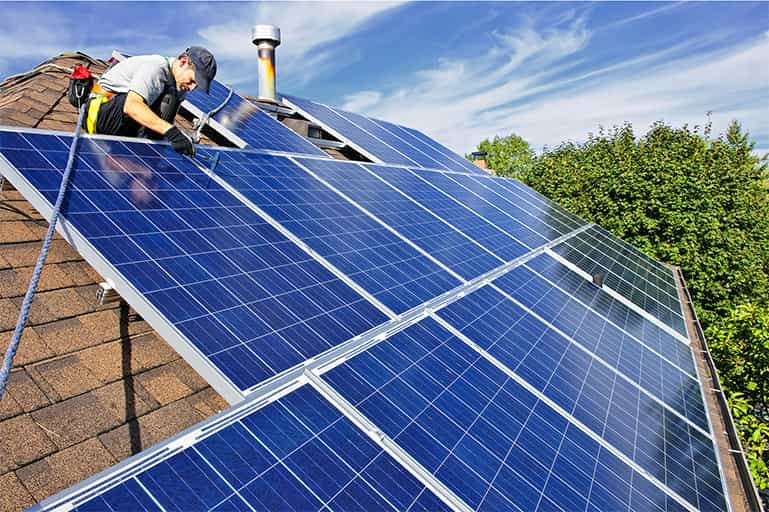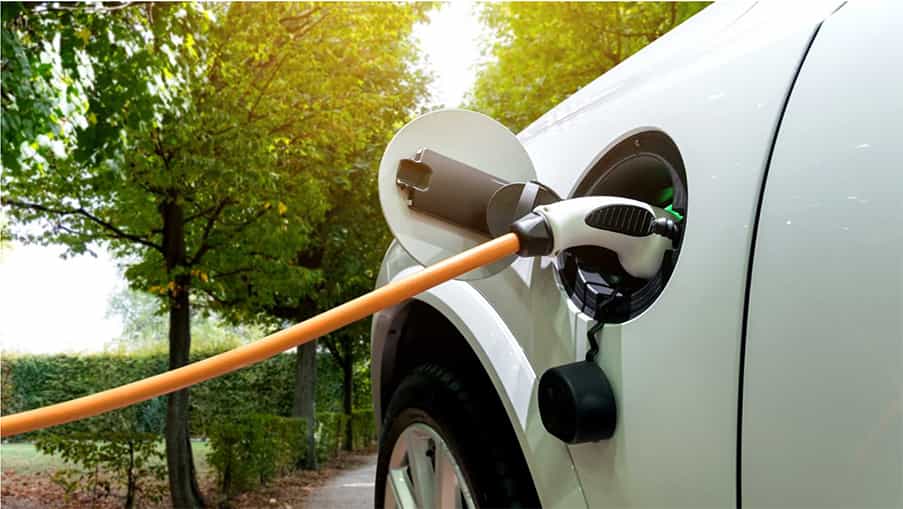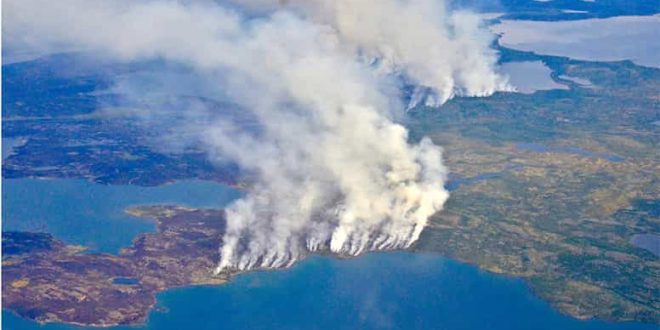By Nick Szymanowski
As the global economy rebounded from the Covid-19 pandemic in 2021, increased use of coal caused carbon emissions to soar to the highest levels in history. An International Energy Agency (IEA) report states that emissions rose by 6% to an earth-shattering 36.3 billion tonnes.
IEA Warning Cannot Be Ignored
The International Energy Agency (IEA) has issued an alarming report that reveals we are simply not reducing our carbon emissions. According to their findings, 2021 was the highest ever for the total emissions produced globally by people on earth.
At the same time, leading scientists have been meeting weekly on Zoom to discuss the situation. The talks have been hosted by international author, Rev. Michael Dowd, who is endorsed by no less than six nobel laureates. The result is a list of inevitables in-line with the UN Climate Change report from January. These are listed at the end of the article.
In keeping with the IEA warning, these need to be accepted if we are going to survive on this planet, and perhaps even thrive as a space-age civilization.
Energy-Related Data Is Conclusive
The upliftment of previously disadvantaged nations is a non-negotiable point when we’re discussing how to approach and deal with the issues relating to carbon emissions. According to the UN website on sustainable development, “Sustained and inclusive economic growth can drive progress, create decent jobs for all and improve living standards.”
According to the experts at Civic Ventures, this definitely sounds reasonable but is not entirely true. In reality, it’s just the best argument found to maintain industrialized business as usual.
This small group of “political troublemakers” from Washington State aims to create systemic disruptive change to help improve people’s lives. This includes their role in some milestone laws. In particular, the Living Wage Bill that guarantees at least $15 an hour rather than allowing a minimum wage.
Their argument, backed by a National Employment Law Project report, is that you don’t kill jobs by raising wages. For example, paying restaurant workers enough to eat in restaurants is the best thing to do if you want to have a thriving restaurant industry.
This highlights two key issues with the Neo-Liberal model being used to push fossil fuel expansion and what’s known as the trick in trickle-down economics.
Two Key Issues
Firstly, for there to be enough resources for the bottom segment of the population to survive, we need to be able to access an infinite supply of instantly available energy.
Secondly, to have wealth distribution governed by “the corporation”, an entity designed to maximize shareholder profit, is like having a socio-path drive the world economic process.
If you want to have a deep dive into the subject, Pitchfork Economics is the podcast for you. They have been recorded by those same folks at Civic Ventures. They also have loads of interviews with experts from around the world.
The most helpful interviews in this situation are probably the ones who are policymakers from countries that have got their energy matrix shifted primarily to renewable already. And a spoiler alert. Those countries are also the ones that make sure everyone has some form of universal basic income, free health insurance, and university education coverage to help better themselves.
CO2 Emissions Soar in China & India
Even the World Bank has issued a statement to say that unlimited growth for developing nations is simply not going to happen. This is because there are finite resources on our tiny blue planet in this obscure corner of the milky way galaxy.
Even if there were enough fossil fuel resources to improve the quality of life for all, the current burn rate required will mean the complete collapse of the planet’s ecosystem. Especially when, according to the IEA report, countries like China have had a 10% increase in their national demand for electricity during the past 12 months.
Even though they are holding steady on energy demand, India has had an increase of 4% in their pollution.
Commenting on a NASA study, Tatiana Loboda, a professor at the University of Maryland, points out that “In the last 20 years we’ve had the three largest fire seasons on record for Alaska and that’s happening at the same time that the population is growing.”
The study was commissioned after the arctic circle started burning during 2019. The BBC has been covering these so-called Zombie Fires. Apparently, this really is a post-doom no-gloom apocalyptic world that we’re all living in – where 20th-century business-as-usual is done.

Global Emissions Identified
The IEA report has clearly singled out China as the main driver of increasing CO2 emissions.
Between 2019 and 2021, China’s emissions increased by 750 million tonnes. In 2021, these emissions rose above 11.9 billion tonnes, which according to the IEA reports accounts for 33% of the world’s emissions.
India’s coal generation has also reached an all-time high. After a brief improvement, it rebounded hard in 2021 to way above 2019 levels. With coal-fired energy generation being a huge 13% jump above 2020 levels.
Ironically, China’s increase in renewable power outputs in 2021 is its highest ever.
At the same time, it’s worth remembering that there are a bunch of developed nations still spewing particles into the atmosphere. Although the IEA global energy review also shows that these economic world-leading nations have also been driving the installation of renewables – so that our planet has been able to meet to new record highs on sustainable energy as well.
Fossil Fuel Responsibility
The Union of Concerned Scientists has re-issued a study that shows that the wealthy nations of the world are responsible for most carbon emissions. Originally published in 2008, it shows the top 15 CO2 emitting countries from 1750-2020:
- United States 24.5%
- China 13.9%
- Russia 6.8%
- Germany 5.4%
- United Kingdom 4.6%
- Japan 3.9%
- India 2.3%
- France 2.3%
- Canada 1.8%
- Ukraine 1.6%
- Poland 1.5%
- Italy 1.2%
- South Africa 1.2%
- Mexico 1.2%
- Iran 1.1%
This leading global network of highly accomplished professionals and academics, who use science to address global problems and improve people’s lives, have identified some important data points:
Firstly, the per capita emission for countries that extract and sell fossil fuels are higher than all the others. Quite simply, if you’re in the business of pushing gas or oil, then you are one-half of the problem. Although Elon Musk, Tesla Motors and Space-X CEO, admits that in an emergency using fossil fuels is a viable option, specifically the March 2022 energy matrix.
The only responsible extended use of those resources is for the rapid shift toward a global economy of free-world countries that are powered primarily by renewables.
US, EU, & Japan
While the CO2 emission increases in the US, European Union (EU), and Japan have been slightly lower than some of the nations listed above, they are still emitting more carbon than developing countries. Their reductions year-on-year are most likely due to the green energy incentives these nations give to those installing solar and wind on domestic properties. If you browse the IEA website you will see which countries are currently offering tax credits. Another reason may be that they are home to more electric car manufacturers than anywhere else.
The IEA issued an Electric Car report in 2020 that shows demand for the technology way out-paces supply. Production figures in the report show the number of cars delivered every year are clearly in line with carbon emission reductions over the same period.
So, clearly, moving toward a transportation infrastructure powered by renewable energy is one of the most important factors for motivating emission reductions. However, we need to remember what the leading scientists are telling us about the reality of this situation.

Climate Change 2022: What Can Be Done?
When looking ahead to what needs to be done, the scientists meeting via Zoom say, deeply adapt to reality! We must also acknowledge Sustainability 101: Indigenuity is not optional. This is a video released by Michael Dowd in 2020, that is one of a series in the Post-doom (Collapse & Adaptation) Primer.
According to the IPCC Assessment Report on Climate Change, there are many things we can do to re-align our lives with the critical shifts in consciousness required right now. This requires an exploration of the fundamental differences between genuine sustainability and the delusional green-washing of corporations attempting to fix real issues with TV adverts.
The 10 Inventables
Michael Dowd introduces the 10 inevitables saying: “Confusion and collective insanity reign without a life-centered view of ecology, energy, and history. Enthralled by gee-whiz technology, and blind to ten collapse-related inevitabilities, we stumble into a future of ecological and societal certainties that most people cannot see, or will vehemently deny.”
- Most people are having a hard time trusting how and why our civilization is collapsing, and that economics is not a science. It is in fact a made-up-set of agreed upon rules that the world agrees to use in the business game – aka a religious doctrine.
- Abrupt climate mayhem (at a rapid 2C+) locks in biospheric collapse and extinctions. Reality is, that which does not change when you stop believing in it. Science is simply the tool that we use to map reality, not reality itself.
- Tipping points already crossed are being falsely framed as “still avoidable”. People think they can control nature. Accepting that we cannot, opens us up to true possibilities. All of the earth systems are in decline towards collapse, and have been for centuries, and this is what is being accelerated by human action. The change cannot be stopped, we can however still avoid mayhem, and perhaps even thrive – by adapting.
- Without an “Assisted Migration” or love-in-action, most plant species will go extinct. 20th century civilization has been a ponzi-scheme in which nature has been stolen from the planet, and there has been massive unsustainably borrowing of all the earth’s resources from the future generations still to live here.
- Without urgent collective action there will be dozens of nuclear meltdowns. Sustainable means being faithful to reality, and unsustainable means being unfaithful to what is actually real. There are plenty of actions that can still be taken to soften the collapse of multinational corporate culture, and ease the shift to conscious capitalism which will help make our world liveable in our lifetimes and into the foreseeable future for our kids.
- As our biospheric and societal predicament worsens, so will our mental health. In order to maintain a state of wellness, both physically and mentally, we need to shift to ways of being that are not destructive. Our fundamental predicament is not climate change, it’s ecological overshoot – because our metrics of wellness are financially based. The only sane way to measure the health of people is life centered. Are plants and animals thriving, or what is happening in the soil? The Gross National Happiness index developed for Bhutan, has data points for health that are worth taking seriously.
- Most people will only reluctantly relinquish their faith in “the Almighty We”. The idea that by getting together we can do this, that the “we” can fix climate change. However, there are already several key extinction-level grace-limits that have been passed. It’s simply not possible to “solve” the climate crisis. The reality is we can only adapt to the change.
- If you proselytize only the doom side of collapse reality, expect to be shunned. People getting into the right relationship with reality is probably the best way to ease the stress of this shift in lifestyle. Looking at the indigenous peoples’ relationship with the planet is a good place to start. Their worldview accepts that the plant is not an ever-lasting life-form, and the only way to get through rapid changes and thrive is adaptation.
- Most people will crave distractions and virtually anything that offers “hope”. No-one wants to hear that the only way beyond the-hope-and-fear-pendulum is grief. Our planet needs to go through the stages, and as the people of earth, we need to go through them too. So, where are you on the spectrum? It starts at bargaining and ends at acceptance.
- Elitist universities and multinational corporations will remain first-rate legal hopium dealers. However, the reality is that there is no way to stop biosphere collapse. And no matter what human-centered technology is invented, life will end on the planet earth. Only an ecological view, and a life-based shift, will create a world-worth living in. And that, in fact, is actually possible to achieve right now without having to do anything.
Perhaps it is worth remembering the poignant story of The Man Who Planted Trees by French author Jean Giono. Because if you are told the world is ending, and that the messiah has arrived, it’s worth first planting a tree, and only then going to see if the story is true.
This course of action truly does seem like the only pro-future, soul nourishing path. However, anything we do to help life thrive on this planet is good, whatever is being sold!
 The Argus Report Read about it!
The Argus Report Read about it!




One comment
Pingback: Solar Efficiency Breakthrough - The Argus Report